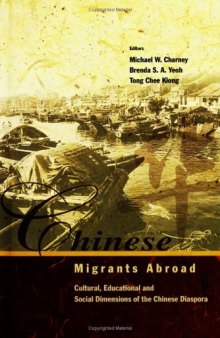 جزییات کتاب
جزییات کتاب
Fast-paced economic growth in Southeast Asia from the late 1960s until the mid-1990s brought increased attention to the overseas Chinese as an economically successful diaspora and their role in this economic growth. Events that followed, such as the transfer of Hong Kong and Macau to the People's Republic of China, the election of a non-KMT government in Taiwan, the Asian economic crisis and the plight of overseas Chinese in Indonesia as a result, and the durability of the Singapore economy during this same crisis, have helped to sustain this attention. The study of the overseas Chinese has become a global enterprise, raising new theoretical problems and empirical challenges. New case studies of overseas Chinese, such as those on communities in North America, Cuba, India and South Africa, continually unveil different perspectives. New kinds of transnational connectivities linking Chinese communities are also being identified. It is now possible to make broader generalizations of a Chinese diaspora, on a global basis. Further, the intensifying study of the overseas Chinese has stimulated renewed intellectual vigour in other areas of research. The transnational and transregional activities of overseas Chinese, for example, pose serious challenges to analytical concepts of regional divides such as that between East and Southeast Asia. Despite the increased attention, new data, and the changing theoretical paradigms, basic questions concerning the overseas Chinese remain. The papers in this volume seek to understand the overseas Chinese migrants not just in terms of the overall Chinese diaspora per se, but also local Chinese migrants adapting to local societies, in different national contexts.



 دانلود کتاب
دانلود کتاب

 جزییات کتاب
جزییات کتاب





 این کتاب رو مطالعه کردید؟ نظر شما چیست؟
این کتاب رو مطالعه کردید؟ نظر شما چیست؟
